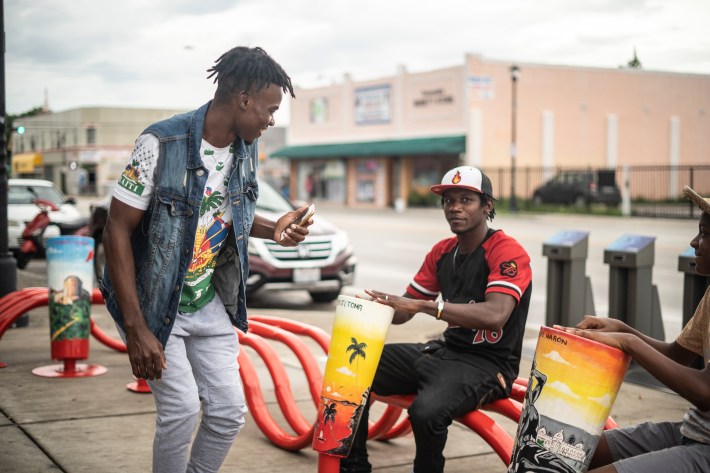If any good has come out of the past year and a half of the pandemic, it is the recognition that cities must dedicate more public space for people to walk, exercise and simply breathe in order to promote public health and wellbeing. The pandemic forced us into isolation, showing the general public how much we value and need physical and social connection through spontaneous interactions, and it stripped us of the moments that once provided us with structured play, such as organized sports. Open streets and outdoor dining have been two responses to the need for sociability, and have opened the door to new uses of streets and sidewalks.
We must push further, however, in order to make our cities healthier and happier: As the founder of The Urban Conga, a design studio that works with communities to weave spaces for play into the fabric of our cities, I believe we are at a crucial moment in which we can begin to invest in creating opportunities for urban play.
Play, you say? Yes, play.
Just like sociability, nutrition and exercise, play is a necessary, universal, lifelong part of the human experience and helps us to discover, explore, and empathize with others. And it can be a powerful tool to bridge divides and spark more equitable spaces in our built environment.
Many cities are beginning to understand the value of creating an ecosystem of inclusive "play spaces" as part of their urban infrastructure. Everyday public facilities — such as park benches, bus stops, street lights, fountains, or any number of other appurtenances — could become ‘PLAY’ces, platforms for open-ended play that provide inclusive, stimulating, creative outlets for communal connection.

New Yorkers may be familiar with some of the transient play spaces that the city has erected in their midst — for example, the glowing seesaws that appeared for a time last year on Broadway between 37th and 38th streets. Similarly, our company's musical sculptures Oscillation, which emit sound as people pass by (see photo at top), delighted New Yorkers for about a month and a half when they appeared in downtown Manhattan last year. But for those unfamiliar with the concept, photos of some other examples created by my company of public space that doubles as a venue for urban play are interspersed throughout this post.
Communities (those that have coalesced around open streets are a good example) often develop play activities and interventions spontaneously, but any truly effective movement to incorporate play into our public spaces would need the support from our city leaders, stakeholders, and policymakers.

Now, I’m not saying that every bench should be musical or that there should be a slide next to every staircase, but we should be looking at play as a critical component of enhancing our urban fabric. A shift won’t happen without an investment from the top.

To some the idea of “play everywhere” might seem like advocates are pushing to make our cities into theme parks, but that is only because our society has conditioned us to see play as a personal activity and has neglected its salutary effect on the health, identity, social, and economic value of our cities and communities. The idea that we need outdoor play spaces that can be used by people of all ages is all too often absent from discussions of urban-infrastructure development, public-space design, and city change. Yet open streets, parklets, and facilities for spontaneous play are key components for creating more healthier, equitable, social, and economical cities and neighborhoods.
In order to create a more playable city, the community must drive the agenda. We can’t prescribe a way to create a "playable city," but we can develop open-ended experiences that not only represents the identity of the community but allows others to engage and add their own identity to the space. A "playable city" is adaptable and contextual to its changing environment.

As New Yorkers contemplate new forms of urban-space management, they might consider how play spaces can add delight to their cityscape. As Stuart Brown, the National Institute of Play founder, once said, “When enough people raise play to the status it deserves in our lives, we will find the world a better place.”
Ryan Swanson (@Rswan801) is the executive creative director of @TheUrbanConga, a multidisciplinary design studio focused on creating more playable cities.







